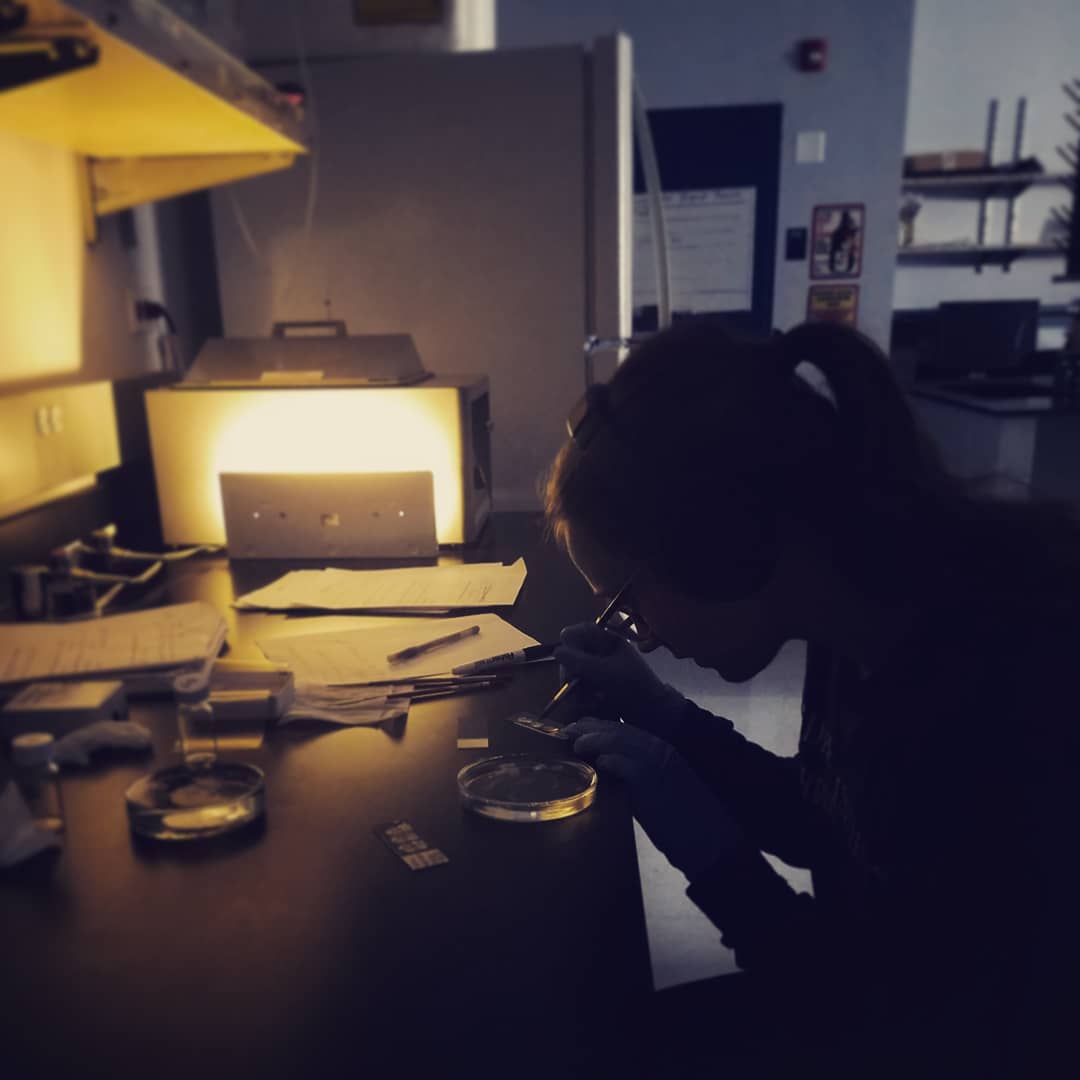 The Bell Lab gives students an opportunity to conduct and publish research. From left to right: Katherine Walker, Margaret Bell, Simone Rhodes and Deborah Liberman (Photo courtesy of Margaret Bell)
The Bell Lab gives students an opportunity to conduct and publish research. From left to right: Katherine Walker, Margaret Bell, Simone Rhodes and Deborah Liberman (Photo courtesy of Margaret Bell)
CHICAGO – There are many factors that can influence a child’s development, including the physical environment where they grow up.
Margaret Bell, associate professor of biological and health sciences, studies “forever chemicals,” persistent chemical pollutants that can be found in water, food, indoor dust, furniture, and cookware, to understand how early life exposure can alter brain responses in adulthood.
Funded by a grant from the
National Institutes of Environmental Health Sciences, Bell and her students published research in the journal
Neurotoxicology. The study focuses on polychlorinated biphenyls (PCBs), a group of industrial organic chemicals that are also considered environmental contaminants.
Through comparing development in exposed and unexposed brain cells, researchers were able to identify that the effects of PCBs manifest differently in youth, adolescence, and adulthood.
Key findings include:
- Exposure to PCBs early in life changes how the neuroimmune system responds to inflammatory challenges in adulthood.
- PCBs alter neurological receptors and proteins essential for fighting infections and regulating cell functioning.
- PCBs alter gene expression for key hormones regulating stress, dopamine, and estrogen production.
- In PCB exposed individuals, microglia – immune cells in the brain – show structural changes in response to inflammation.
- The effects of PCBs in adults manifest differently between sexes and across brain regions
In other words, the chemicals that individuals are accidentally exposed to early in their life can change how their brain reacts to experiences in adulthood, including when they have an infection. This might include feeling more or less sensitive to other challenges than they would have otherwise.
 Simone Rhodes mounting tissue on slides for imaging. (Photo courtesy of Margaret Bell)
Simone Rhodes mounting tissue on slides for imaging. (Photo courtesy of Margaret Bell)This study builds on existing research about the negative impacts of PCBs and other persistent organic pollutants. Bell’s experiment is the first to demonstrate the effect of PCBs on microglia, which are linked to many neurodevelopmental, neuropsychiatric and neurodegenerative disorders.
Findings from Bell’s study may also apply to Per- and Polyfluoroalkyl substances (PFAS), which were initially developed as stain repellents, water protectors and surface protectors. Unlike PCBs, PFAS have not been regulated and are still used in everyday products such as food packaging, non-stick cookware, and water-repellant clothing.
“PCBs are a model legacy contaminant. What we learn about them is likely applicable to other, newly developed forever chemicals that are not as well-regulated as PCBs are now,” Bell says.
While it is not possible to completely prevent exposure due to their prevalence in everyday products, being aware of the most common uses of PFAS can help
minimize exposure. Small changes such as using a water filter, avoiding non-stick cookware and avoiding eating fish from contaminated waterways. People who are pregnant should be particularly aware of possible PCB and PFAS exposure.
“PFAS pop up in unexpected ways, so you can’t protect yourself against everything. Pick something that you can control and do that,” Bell says. “I personally believe that an individual shouldn’t have to be vigilant to protect themselves from things that should be systematically regulated. It is important to ask your government to do that heavy lifting for you.”